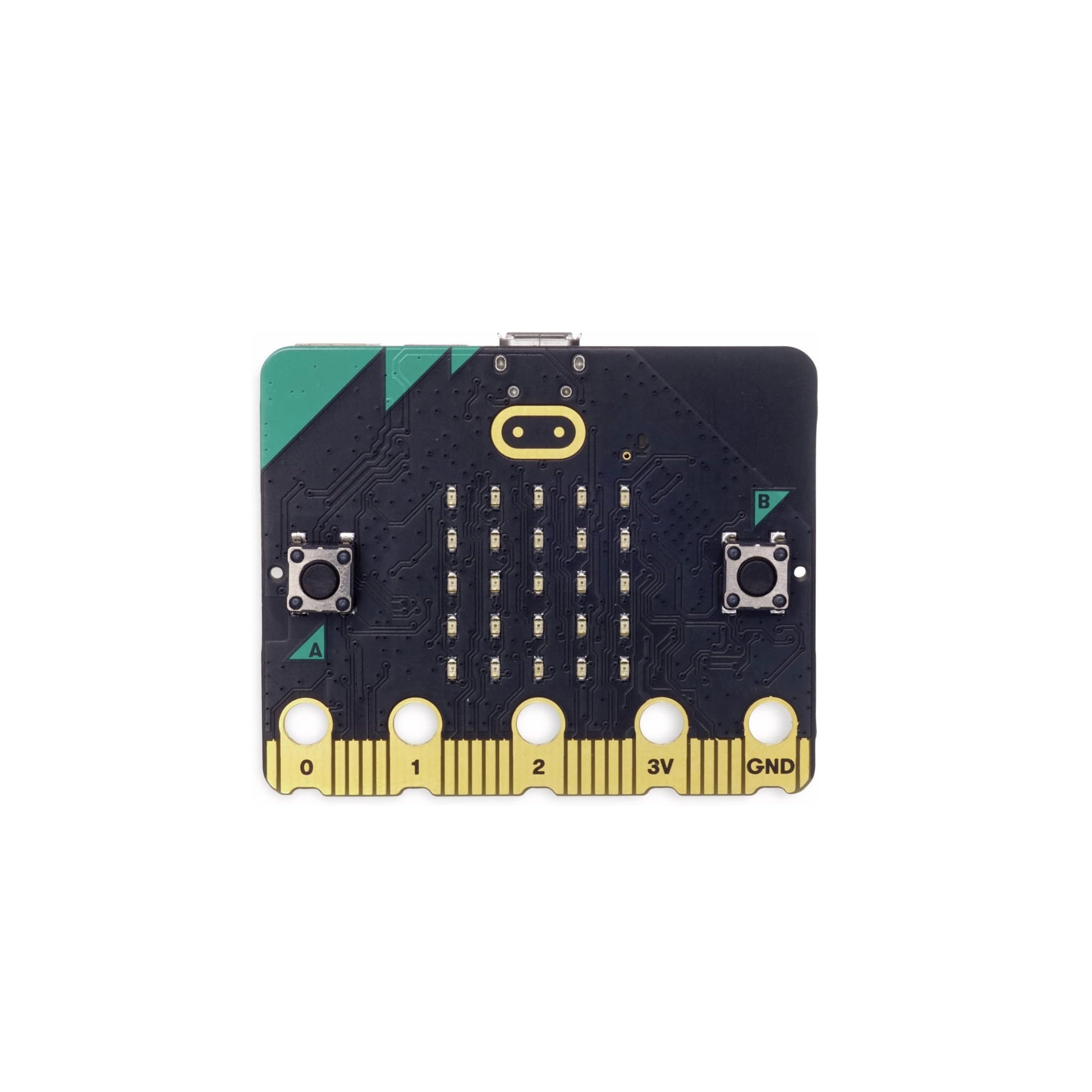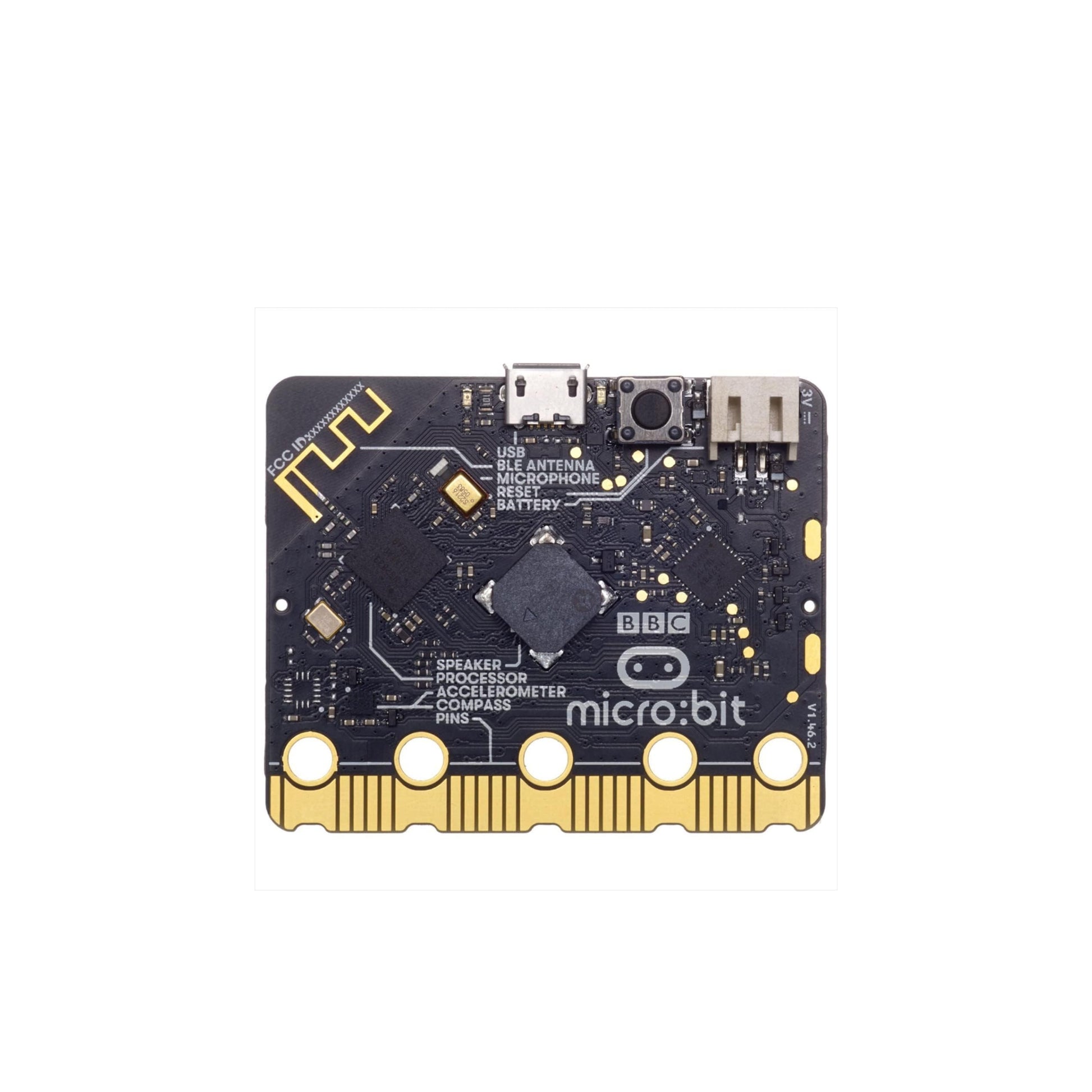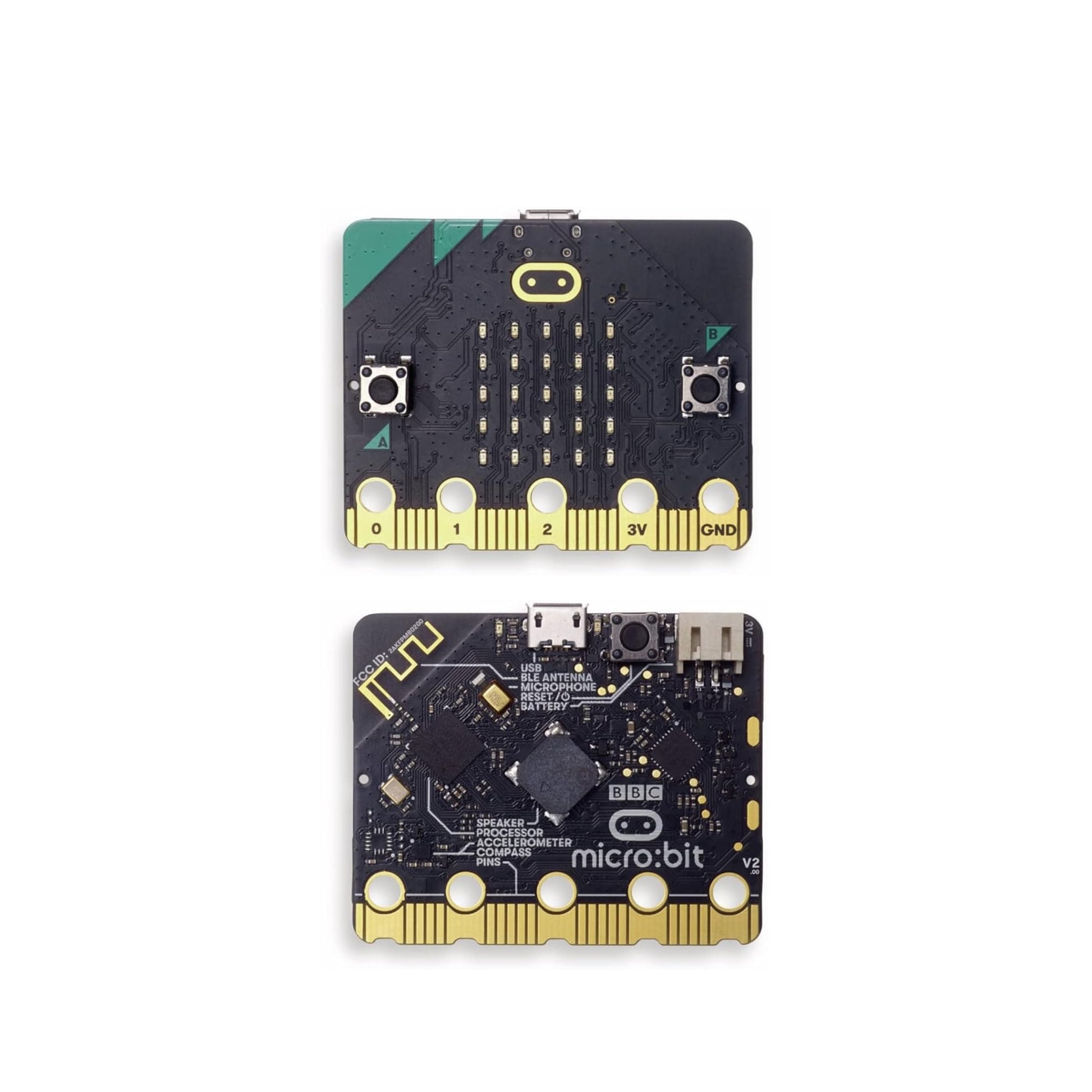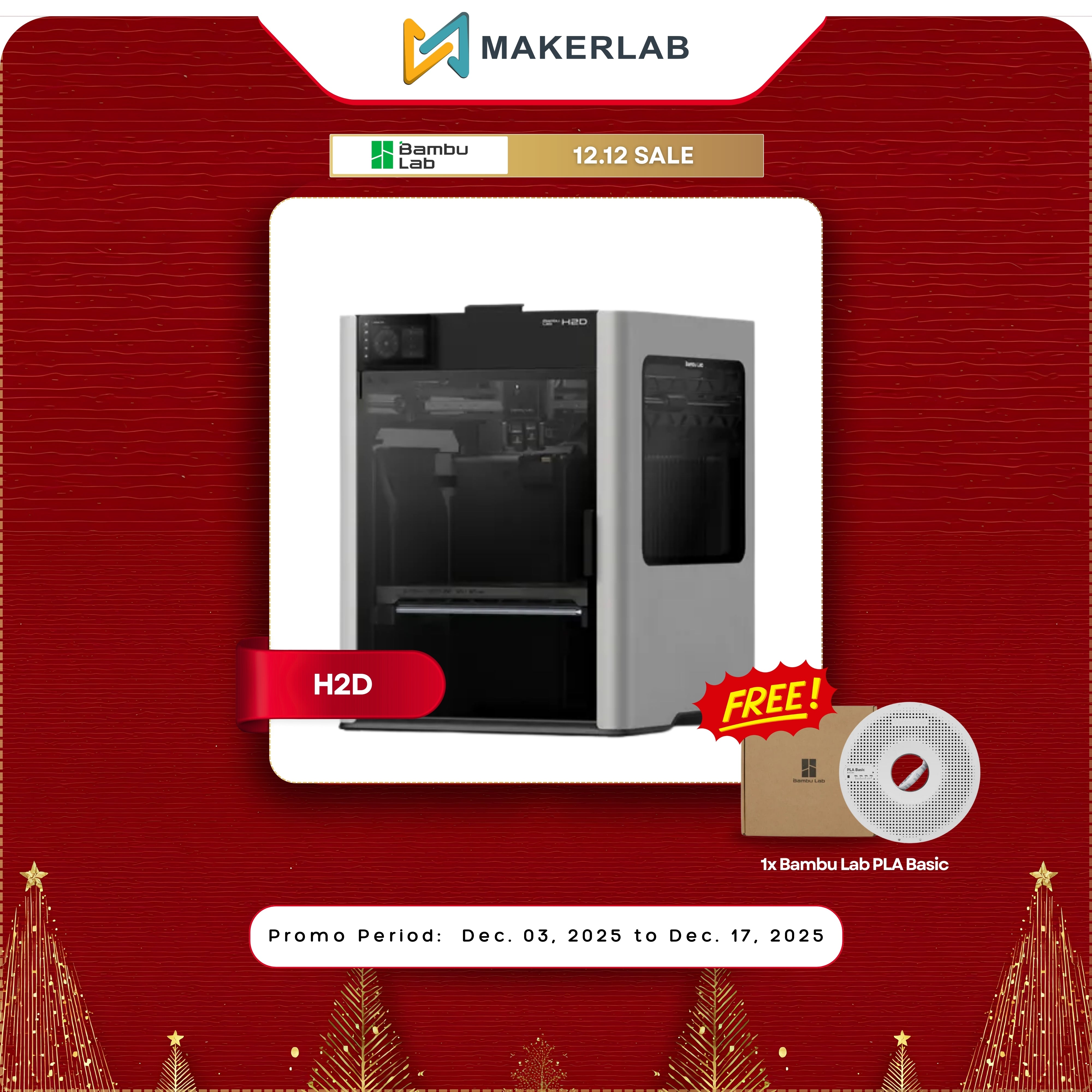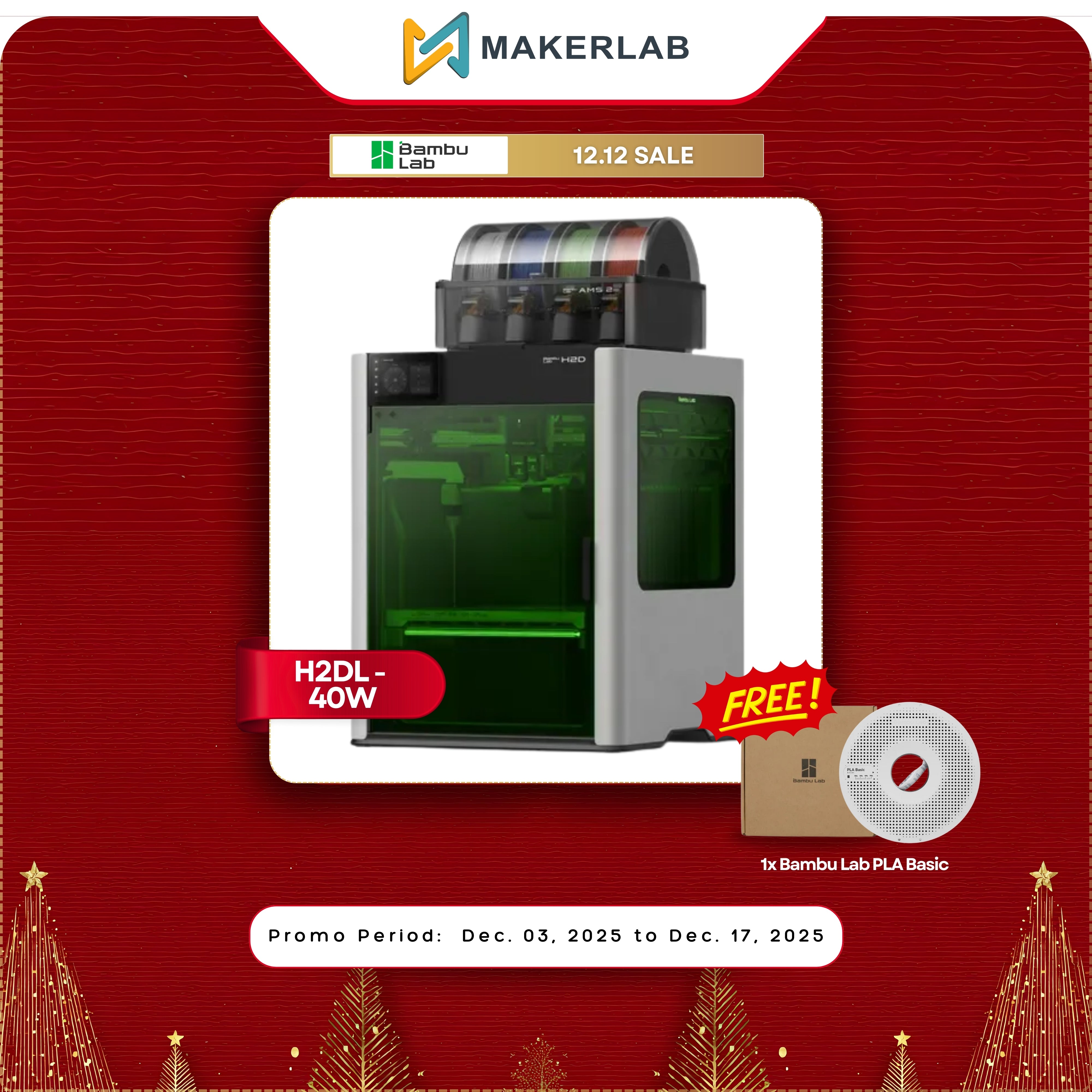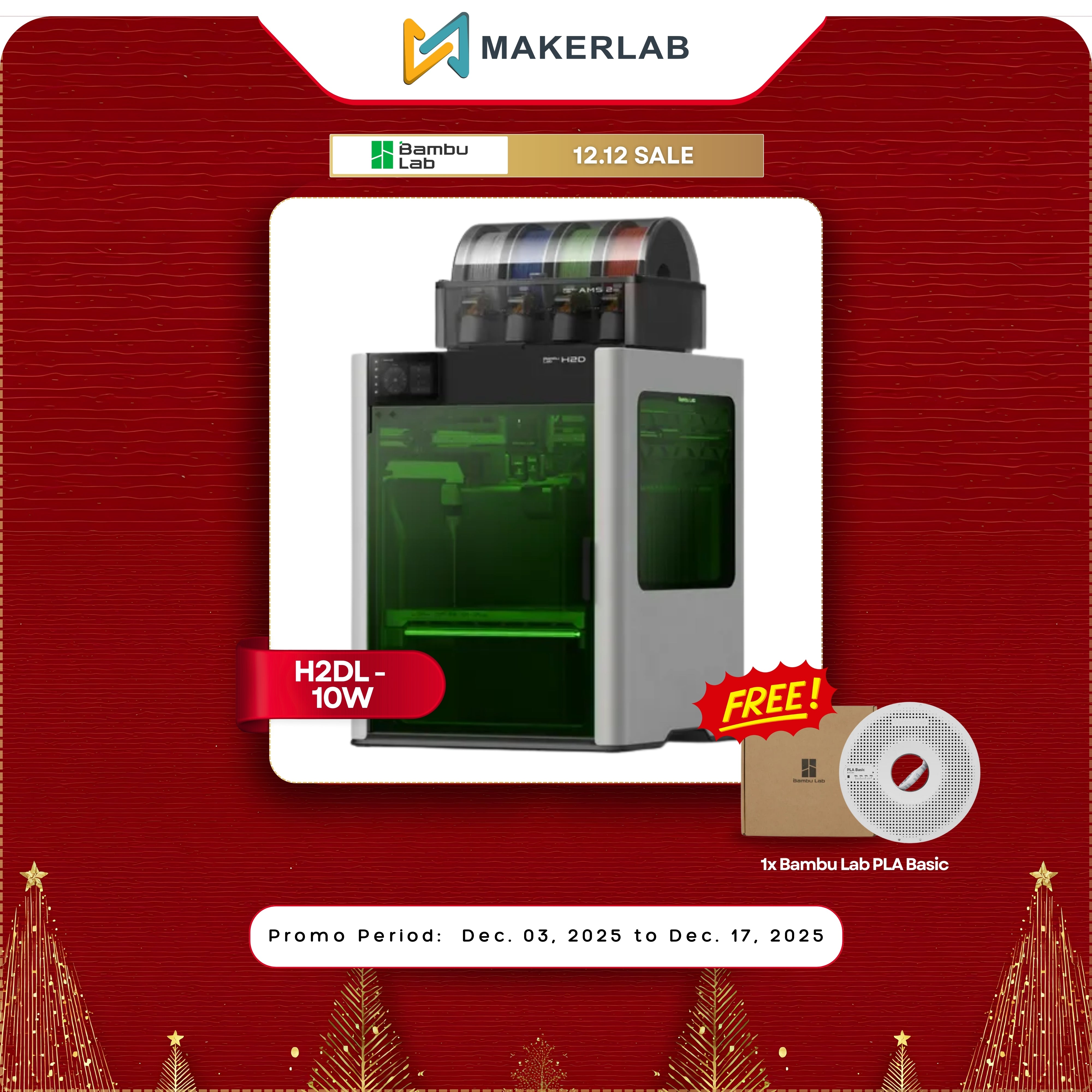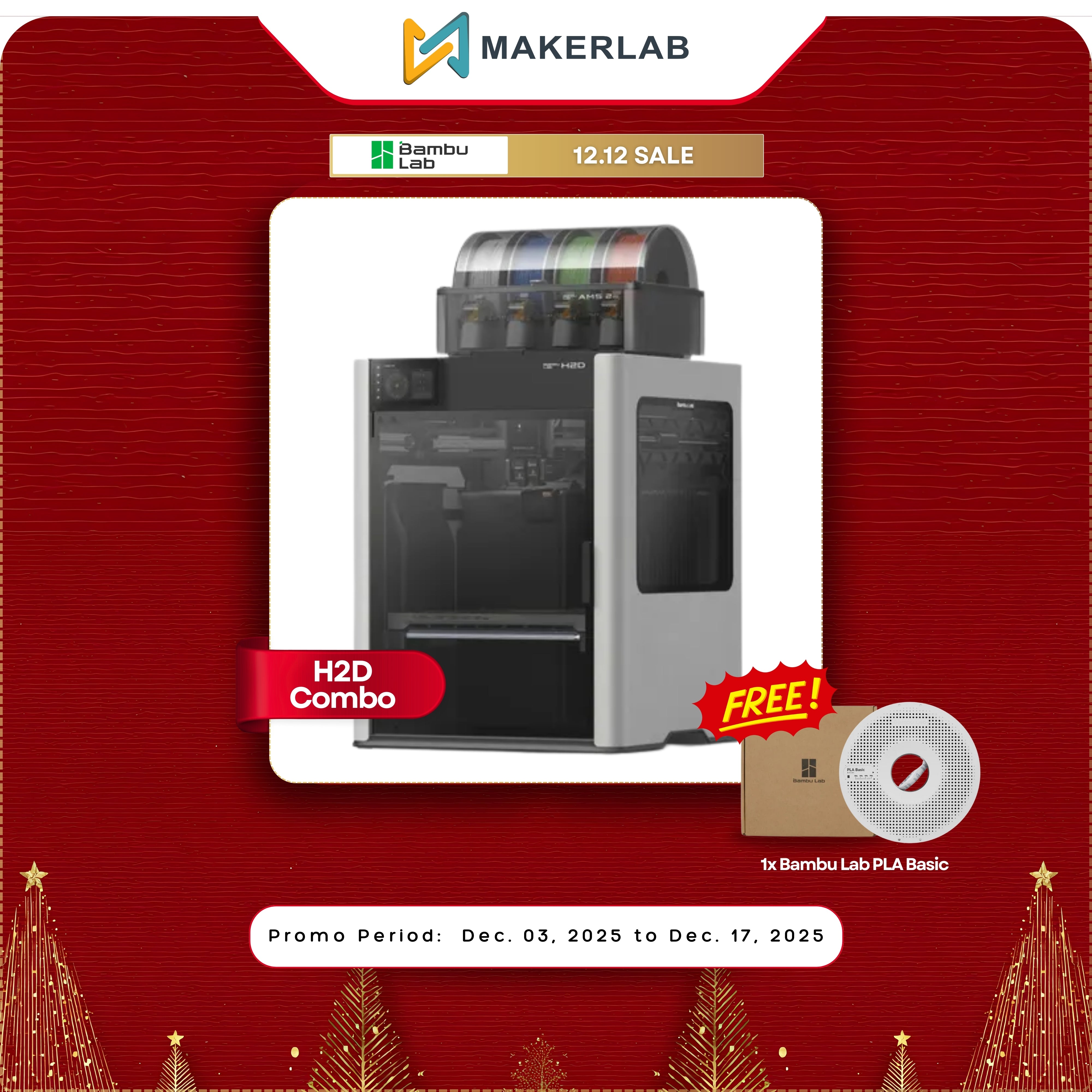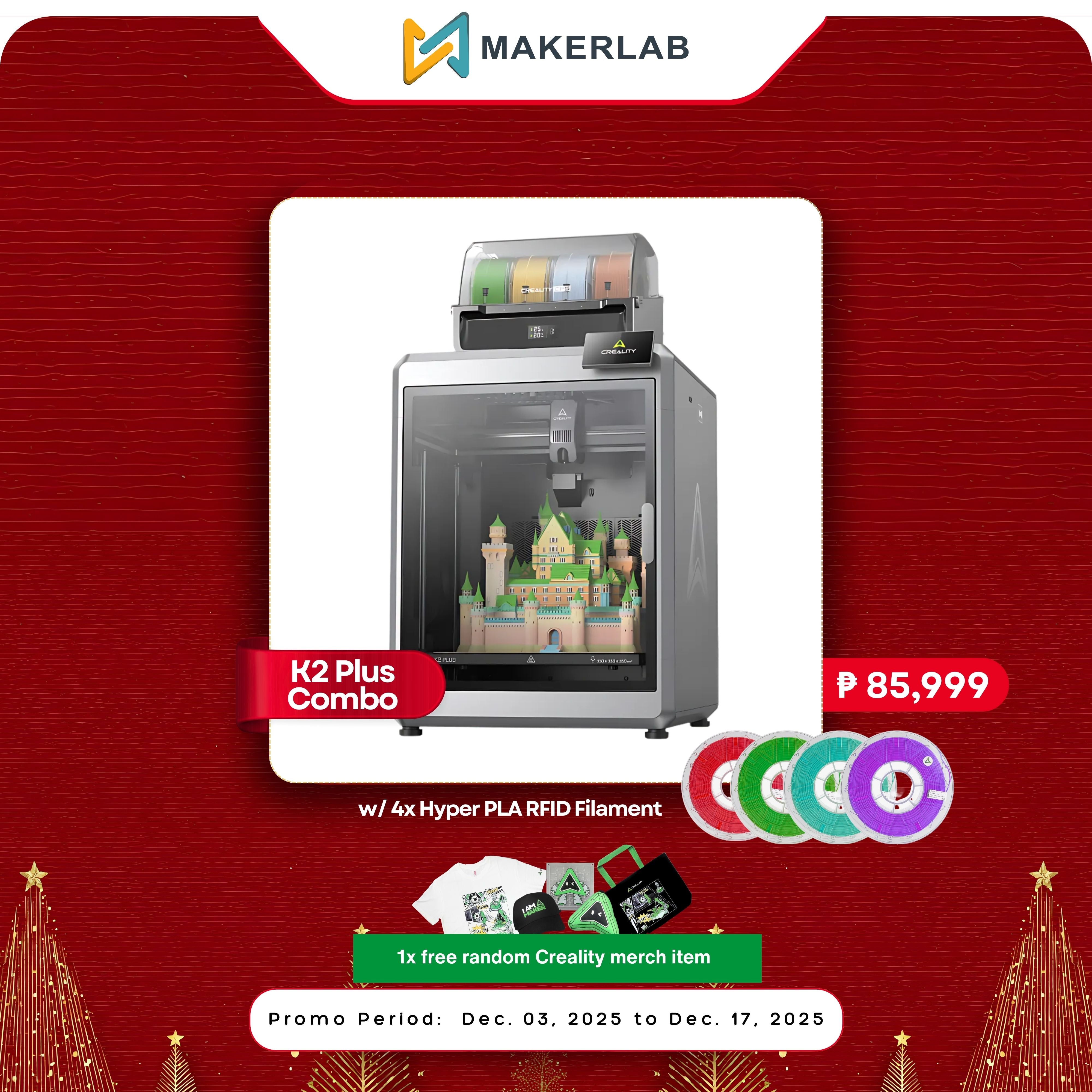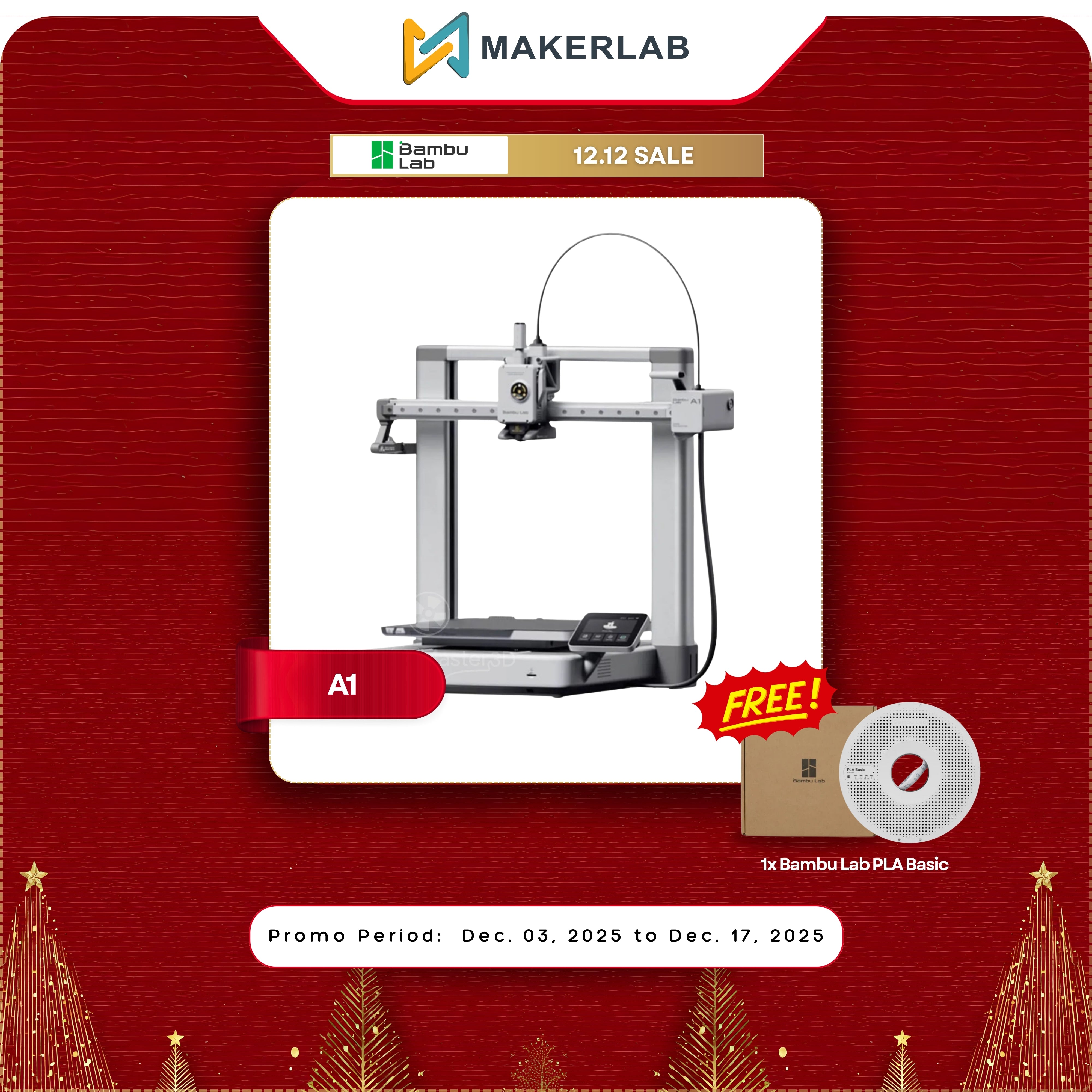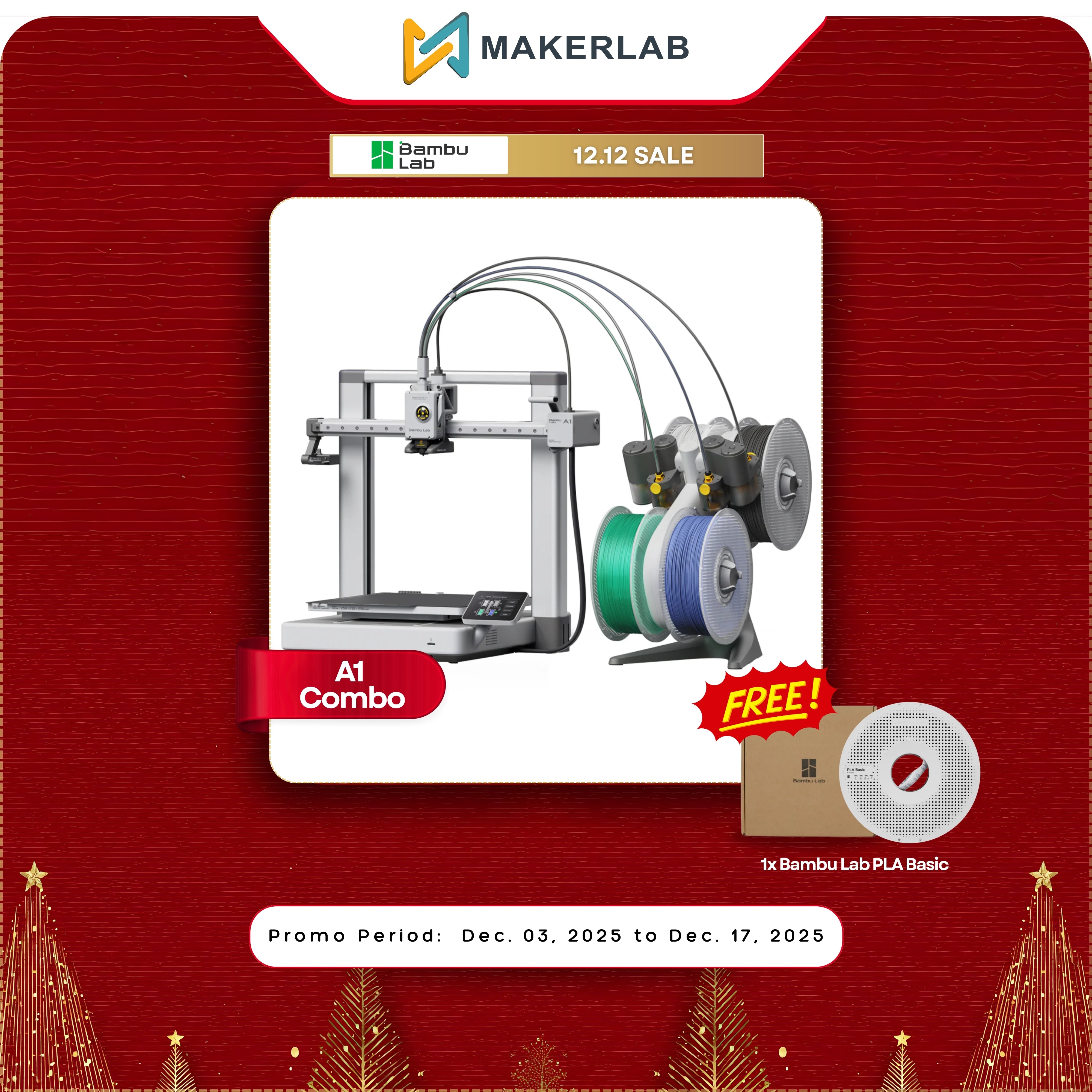SKU:MLE03585
BBC Micro Bit Go V2.2
Couldn't load pickup availability
files/MLE03585_1.jpg
06:34 AM
Product Description
Description:
The BBC Micro:bit Go V2.2 is a small computer board designed to make learning coding and electronics easy and fun. This "Go" kit comes with everything you need to start using it right away.
The Micro:bit board has many built-in features, including a grid of 25 LED lights, two programmable buttons, and a motion sensor. The V2.2 version also adds a built-in speaker and a microphone, allowing it to make sounds and respond to them. It connects wirelessly using Bluetooth.
This board is perfect for students, hobbyists, or anyone looking to learn about coding, physical computing, and creating their own simple electronic projects.
Features:
25 LED matrix on the board where you can scroll messages or display numbers
Accelerometer to detect movement or tilting
Compass
Bluetooth connection to interact with the internet or other devices.
2 user input buttons
Micro USB connection to use with PC for programming
Port for a battery pack
ARM Cortex-M4 CPU
Built-in speaker and microphone
20 pin edge connectors along the bottom of the board
How does the BBC micro: bit work?
It's programmed with beginner friendly, drag and drop interface MakeCode with the option to progress into MicroPython later on, opening up even more programming possibilities!
It's packed with inputs, outputs, sensors and radio communication features that can be combined into and endless variety of projects.
Inputs and outputs: An important part of any computer system. As a very small computer, the BBC micro:bit has plenty of inputs and outputs to learn about and use.
LEDs: An LED, or light-emitting diode is an output device that gives off light. Your BBC micro:bit has a display of 25 LEDs for you to program.
Buttons: A very common input device. Your micro:bit has two "clicky" buttons and a touch sensitive button you can program, and a reset button.
Radio: A way of sending and receiving messages and BBC micro:bits can use radio waves to communicate with each other.
Accelerometer: A motion sensor that measures movement. The accelerometer in your BBC micro:bit detects when you tilt it left to right, backwards and forwards and up and down.
Compass: An input sensor that detects magnetic fields. Your BBC micro:bit has an inbuilt compass that can detect the direction in which it is facing.
Light sensor: An input device that measures light levels. Your BBC micro:bit uses the LEDs to sense the levels of light and lets you program your micro:bit as a light sensor.
Temperature sensor: An input device that measures temperature. Your BBC micro:bit has a temperature sensor inside the processor which can give you an approximation of the air temperature.
Pins: On the bottom edge of your BBC micro:bit there are 25 gold strips, called pins. These pins allow you to really get creative. You can create circuits, connect external things like buzzers and motors and make your own fun projects.
Sound: Your BBC micro:bit can be programmed to make a wide variety of sounds - from single notes, tones and beats to your own musical compositions.
Specifications:
Processor: 32-bit ARM Cortex-M4 with FPU
Connectivity: 2.4 GHz Radio, Bluetooth 5.0 (BLE)
Sensors: Accelerometer (motion), Magnetometer (compass), Temperature, Light
Input/Output:
5x5 LED Display (25 programmable LEDs)
2 Programmable Buttons
Touch-sensitive Logo
Built-in Speaker
Built-in Microphone
25-pin Edge Connector (for external components)
Power: Can be powered via Micro USB or 3V battery pack
Dimensions: Approximately 5cm x 4cm
Packing List:
1 x micro: bit V2.2 board – available in 4 colors red, yellow, green & blue (please note we cannot select the color of the micro: bit you will receive)
1 x Quick Start Guide
Requires:
-
Computer/laptop with Internet access
Documents:





